Fire accidents in the buildings are one of the major concerns for the builders, developers, architects and government authorities in the Middle East. Now, building regulations have seen advancements in recent years in the region. Recent developments like the Dubai Expo 2020 is imposing strong regulations for the façade fire safety material and equipment market. The new UAE Civil Defence Codes have revolutionised the façade industry and also offer a higher standard of regulation as compared to the previous regulations. Many fire incidents have been witnessed in the Middle East region in the last few years that have taken many human lives and caused economic losses. In order to minimise these losses, the fire safety codes are getting stringent. To understand this critical aspect of façade fires, we interviewed many key players in the industry and gathered their thoughts on this important topic. This edition’s cover story deliberates their views...
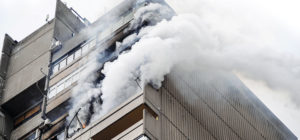
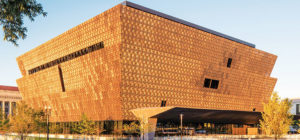
Middle East Architecture – A Jungle of Glazing?
In the last few decades, architectural language at a global level has given more importance to the ‘transparency’ and ‘lightness’ of building spaces - influencing and driving the Middle Eastern world towards a flattering glazed built environment. [caption id="attachment_34427" align="alignleft" width="217"] An Example of Façade Made of Brick Masonry/Elements Both Enabling Shading and Ventilation[/caption] The question I then pose is this, to what extent fully glazing facades, in particular the buildings that claim to be ‘green’ and ‘sustainable’, are actually concerned about the environment? The Middle Eastern cities have become a jungle - a jungle of concrete, steel and glass. The architecture here is primarily influenced needlessly by concepts from predominantly the Western world. We must remember that most of the iconic designs have been developed by expatriates. One of the most difficult problems for expatriates in the Middle East is their relative lack of experience of the public realm....
Posted on: 27 Nov 2019
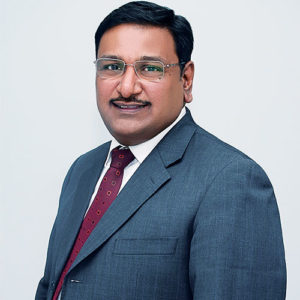
Vinay Deshpande
Vinay Deshpande has over 32 years of building systems engineering experience, 27 years of which have been in the fire protection industry. He started his fire protection engineering career in India before shifting to the Middle East. He is working in the Middle East from last 20 years. Vinay Deshpande is an experienced design engineer with a deep knowledge of both NFPA and British Standards as well as the local codes in the region and is able to develop fire protection designs, which are both practical and cost-effective. He is currently heading a fire engineering team at DEC Dynamic Engineering Consultants, Dubai, UAE and is involved in some prestigious projects like Dubai Parks and Resorts, La Mer, Dubai Creek Harbor Tower by Calatrava, The Royal Atlantis, etc.
Posted on: 19 Nov 2019
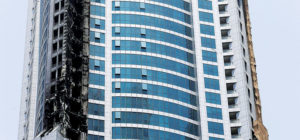
Façade Fire Safety in the Middle East
For architects, the façade of a building is a beautiful building front that defines the character of the building and reflects on its design. However, with the recent rise in façade fires globally, this meaning is shifting towards its literal meaning of “a false appearance that makes something seem more pleasant or better than it really is”. The fire safety that is applicable to the building envelopes in the Middle East has grown exponentially over the years from a traditional use of just fire extinguishers and basic fire warning alarm systems to more sophisticated integrated life safety systems, to meet the demands of more international quality building use. This growth phase in the building design and construction industry has also brought in more professional designs, technologies and construction methods to meet the demand and match the speed of growth. [caption id="attachment_34301" align="alignleft" width="500"] Testing of Façade Material (Picture Credit: Thomas...
Posted on: 19 Nov 2019

Façade and Light
Light has always played an important role in building design and construction. A building cannot be functional without access to light. Lighting design is mainly characterized in two categories, natural and artificial lighting. Both lighting possibilities have an acute effect on indoors and outdoors during different times of a day through the fenestration of the building. The effect is defined in terms of views exchange, impact on the environment, the health of occupants, etc. There are various tools such as Grasshopper in Rhino, IES, Sefaira, etc. that help to understand these effects before the actual construction of the building. Therefore, a building's façade design plays a very important role in the indoor outdoor relationship of lighting. Daytime The key to façade design is the relation between the outside sunlight and its interaction with façade to allow the daylight to enter inside the building to facilitate various functions. Not only does...
Posted on: 11 Nov 2019

Windows A Dialogue
[caption id="attachment_34023" align="alignleft" width="150"] Bedroom - Before Renovation[/caption] Windows is a dialogue - an interaction between elements - sometimes complementary and sometimes divergent. Windows is a way of deciding the language the dialogue should have, as well as the intonation, and that is really what sets the mood. Every project that creates a habitable space is constantly addressing the making of fenestration. It is the underlying dialogue that is created between the inside and outside, between the built and unbuilt. [caption id="attachment_34024" align="alignright" width="217"] This Pavillion had a Corner Frameless Glazing within a Steel Structure andthe Open-able Sliding Window is Only in the Middle for Access OutsideMaterials: Combination of Mild Steel Structure Fixed Windows with a Sliding uPVC Window[/caption] Often there are certain features of design elements that are generalized and passive across different typologies of the built environment, however, windows are design elements that are heavily influenced by multiple...
Posted on: 05 Nov 2019

Abdul Moeed Chaudhary
Abdul Moeed Chaudhary completed post-graduation in M Tech Building Energy Performance from CEPT University. During M Tech study, he did a comprehensive analysis of passive design strategy, HVAC, lighting, day lighting and energy simulation and also did research on lighting retrofit and visual comfort. In the same research, he presented a paper in the research conference (FARU 2017) at Colombo, Srilanka. Currently, Abdul Moeed Chaudhary is working with Conserve Consultants Pvt. Ltd. as a Senior Engineer in Consulting Team (Mumbai) for business development and project management in the field of sustainable design. Previously, he has worked with Terraviridis Environmental Design Consultancy as a building energy analyst and performed energy simulation, lighting and day lighting simulation. He also writes poetry and dialogue.
Posted on: 30 Oct 2019
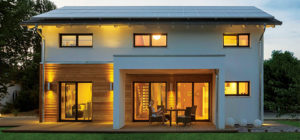
Improved Acoustics & Thermal Comfort Through Effective Fenestration
Aluminium doors, windows and curtain walls are considered to be the technological and architectural elements with designed functions to interact between two inside and outside environments and are supposed to guarantee general comfort within the home. The main functions between others are mechanical properties, air, water and wind resistance, thermal insulation, acoustic insulation, light and shade, ventilation and safety. Current Trends In Aluminium Windows, Doors & Curtain Walls In Context To The Acoustic And Thermal Performance Nowadays, an important element in the design of low energy buildings is the use of high-performance windows coupled with passive solar design strategies. As energy efficiency becomes more important, north Indian designers sometimes look to Europe for energy-efficient standards and technologies, such as the passive house approach. However, comparing European and Indian windows is complicated by the significant differences between European and Indian energy performance rating standards. The different evaluation methods and boundary conditions...
Posted on: 23 Oct 2019
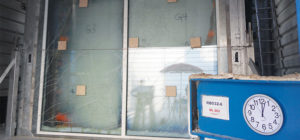
Fire Safety : Testing & Certification – Importance and Necessity
In a fast world where urbanization is the only way of improving the growing needs lifestyle and the comfort of the mass population, one cannot disregard the alarming factor of providing a safe environment without compromising the latest evolution of architecture. Considering the above scenario, we are now using various new materials which were not seen in the past decades. The architecture is evolving at every step and the materials used to realise the architecture should also ensure a safe environment for the people inhabiting the space. This brings us to the very need of standard testing procedure and certification process in order to ensure the materials that are used in our daily space provides Fire Safety. Building fires are increasing partly because of unregulated use of materials that are not fit for use in a compartment which required to contain or stop fire from spreading further. To sum up...
Posted on: 14 Oct 2019
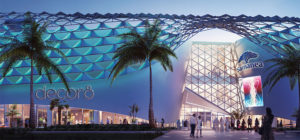
“Façade Integrated Intelligent Shading System & BIPV are the Latest Trends in UAE”
Tell Us About Your Practice and Design Approach? John R Harris & Partners is one of the first European practices to operate in the ME region with the founder of the practice late John R Harris establishing the practice in UK in 1949. In 1960s, John R Harris & Partners were invited by then Ruler of Dubai, HH Sheikh Rashid Bin Saeed Al Maktoum to develop a master plan for the rapidly growing city of Dubai. Since the establishment of Dubai offices in 1960s, the practice has been delivering several significant projects in the region, which include Dubai World Trade Center, Ruler’s Diwan, Dubai Hospital, Al Baraha Hospital, and recent landmark projects including LOB Tower 17 & 18 in JAFZA, Mirdiff 35 Mall, and currently the under construction Sports Society Shopping Centre. The practice has recently joined forces with Aukett Swanke Group Architects - UK, which has greatly increased our...
Posted on: 03 Oct 2019
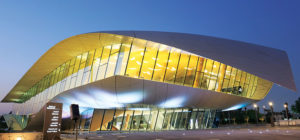
Glass Facade – A Boon for the Fenestration Industry
Glass is one of the oldest and most popular material in building construction. Over the years, it has emerged as one of the widely used facade materials around the world. Glass when used as a facade material, makes the building look more beautiful. One of the most important benefits of glass is that it allows natural light to enter the building, thus saving the electricity costs. Glass Facade also offers extraordinary flexibility, which makes it the most preferred choice amongst the architects, builders and consultants. In this Article, the experts have given their opinions on how glass is revolutionizing the building industry in the Middle East. Through this article, you will also get to know about the new technological trends in the glass facade and how they benefit the buildings in the region. Demand for glass facades in Building Envelope Over the centuries, the glass has evolved dramatically. For years,...
Posted on: 26 Sep 2019
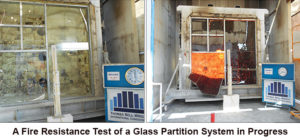
Using Fire Doors to Maintain Fire Safety
When loss to human life and property bring about grief, we invest our resources to ensure such losses do not occur again. For decades, countries and jurisdictions have been writing and evolving guidance documents (building codes) to build-in safety measures in construction to prevent loss to life. These codes give requirements ranging from structural requirements, fire initiation and growth prevention requirements, and even requirements for the design of plumbing systems to ensure the health of building occupants. The development and implementation of such codes in many countries is usually driven by manufacturers of products who believe very strongly in prevention of loss. The ethos of such companies drives them to aid the adoption and localisation of such codes written internationally. Fire Safety Codes They are guidance documents which usually divide construction of different types of buildings by grouping them into what is called occupancies (the occupants and use of the...
Posted on: 19 Aug 2019
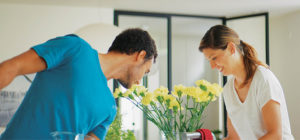
Demand Controlled Ventilation: A ‘Must Have’ for a Healthy Indoor Climate
Each day, the indoor air in a building is polluted by a number of sources: the occupants (breathing, sweating), their activities (cooking, showering, heating, smoking, etc.) and also by the building itself and its furnishing (radon, volatile organic compounds, paint, glue, varnish, detergents, etc.). With an increasing trend towards airtight construction, this can cause problems with humidity, CO2 and various other substances staying inside the home as adequate ventilation is not considered. This is why we must regularly and properly ventilate our buildings, using demand controlled ventilation. Humans do need about 20 m³ of fresh air to feel well. Fresh air, full of oxygen, gives us energy, improves concentration and avoids sleepiness. As a matter of fact, excessive insulation and inadequate ventilation create a dead and stale air which accumulates mites, molds, viruses, bacteria, as well as moisture and harmful chemicals. It has been proven that breathing larger amounts of...
Posted on: 10 Jul 2019
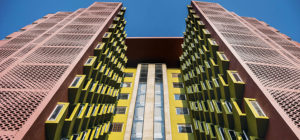
Facade Follows Function Zephyr, Bhawdhan, Pune
Pune is one of the fastest urbanising cities in India due to a rapid increase in population and migration of people from varied cultural backgrounds. Here, the potential residents vary from a group of individuals to a nuclear family sharing a unit with more rooms in affordable lesser carpet area. [caption id="attachment_40319" align="alignright" width="150"] Staggered positioning of windows is to break the notion of the obvious floor[/caption] Financial crunches and property rate hike are the factors governing the market demand, resulting in high-density housing characterized by towers of repetitive units with poor habitable space-quality and light-ventilation problem similar to any other developing city. This results in loss of culture and identity of the area taking towards common universal language. Nature of the building facades should be the outcome of the architectural design process with respect to region, technology and cost. One cannot think of it separately. It may be stylised...
Posted on: 02 Jul 2019
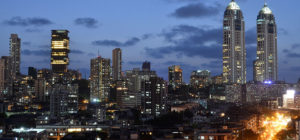
In Conversation With The Visionary Of Architecture
WFM: How have you been ideating and practising sustainable architecture? Do you think that the present ratings for sustainable buildings are important? [caption id="attachment_32675" align="alignleft" width="300"] Infosys Progeon, Bengaluru[/caption] Hafeez Contractor (HC): Yes, I feel that the green building ratings are important. In India, sustainability of the building could be evaluated by its LEED or GRIHA rating. Such ratings assess the environmental performance of a building holistically, and provides a definitive standard score. The tools adopted by them, by its qualitative and quantitative assessment criteria, is able to ‘rate’ a building on the degree of its 'greenness’. According to the points achieved, buildings are given LEED Platinum, Gold and Silver ratings, or GRIHA 1 to 5 star rating. [caption id="attachment_32677" align="alignright" width="300"] Infosys, Mysore[/caption] According to me, we have to take the standards assigned to the green building ratings to a much higher level in future. For our country, the...
Posted on: 01 Jul 2019
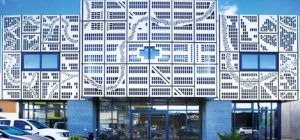
Sustainability Through Intelligent Façade
Of late sustainability has become an assurgent part of our life. It is like acerbic penicillin, must taste in order to get over long-term pain. By this word, we understand the protection of the ecosystem through the protection of its resources. Sustainability can be broadly perceived in two categories: economic and social. The economic sustainability of a building (façade) depends on two aspects. Firstly, the investment is at par for maximising durability and reusability and secondly through solutions with low energy consumption, easy to clean, operate and maintain at low running costs. The social facia of sustainability is all about the comfort, well-being and safety of the occupants. THE DESIGNING OF INTELLIGENT FAÇADES Passive mode double skin façade Façades are one of the most crucial entities of a building composition. Eventually, it is the prime key towards energy consumption and comfort. Intelligent design systems, if adopted can easily lead to...
Posted on: 19 Jun 2019

